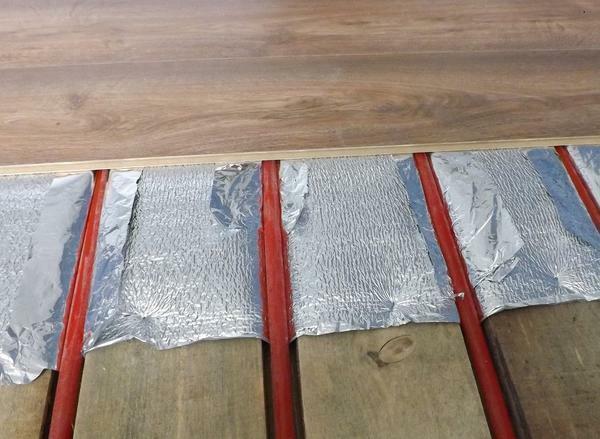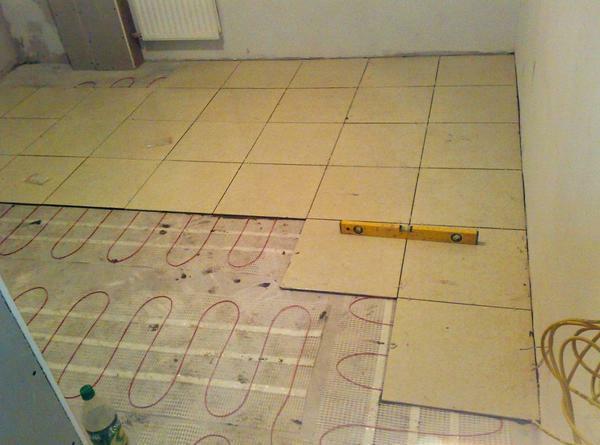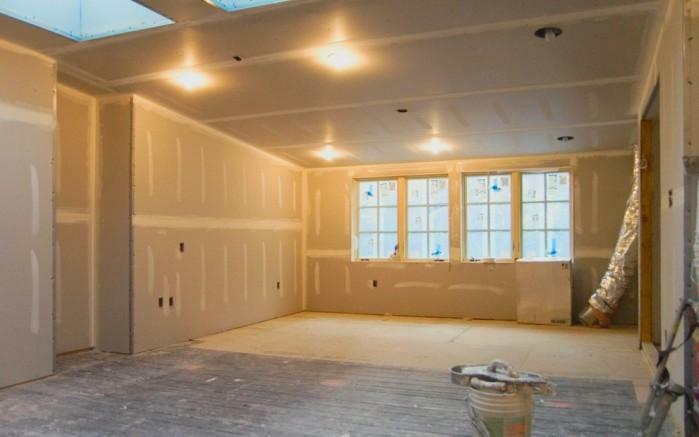Marmoleum and linoleum, sound the same, what's the difference? A brief excursion into the past. Marmoleum linoleum appeared earlier, a few centuries ago, the court architect thought, what would cover the floor so that there is reliable, durable, beautiful, but also not too expensive.
Someone had the idea to impregnate the canvas (jute), which is impregnated with a different natural hardening mixtures of melted wax, resin, olive oil, of dyes. This was, in modern parlance, marmoleum.

Reason for the return to the Marmoleum
With the development of science and technology, chemistry, impregnated with olive oil became expensive, and scientists suggested impregnated fabric oxidized oil, and for added strength crushed cork wood.
Linoleum is a long time was in vogue during combustion it emits toxic substances when heated too, but put up with it because of the convenience and cheapness. Finally, in connection with the fashion for all clean again returned to fashion marmoleum.
What is marmoleum
Each manufacturer has its own recipe, but usually it consists of:
- jute framework;
- special mixture of natural dyes, natural resins, linseed oil, ground lime, wood flour.

The mixture was maintained at a temperature 30 degrees in special tanks and then applied to the jute cloth, and then all this press. Then, the finished product is kept in special chambers at 26 degrees and wear resistant coating is applied.

Advantages Marmoleum
- entirely natural ingredients;
- it does not emit toxic substances;
- It does not cause allergies;
- Reasonable price by 15-30 percent cheaper laminate;
- It has antibacterial properties;
- lasting. Withstand a load of 160 kilograms per square centimeter;
- It gives a good sound and heat insulation;
- high wear resistance;
- long life, from 20 to 30 years;
- It does not lend itself to the fire:
- resistant to chemicals;
- a huge range of colors;
- ease of installation, consult anyone.

disadvantages Marmoleum
- fragile, easily break off the edge;
- can be twisted into a roll once, the basis of the outside;
- bad cut, so severed hand pieces should be laid only at the wall;
- eventually it spreads and hardens, so it can vspuchilis;
- very difficult, it requires a lot of physical strength during installation and transportation.
How to choose marmoleum
Available in three types:
- rolls are used for very large rooms;
- tiles, 50x50 or 30x30 centimeters;
- panel size 90h30 centimeters.

Please note, it is recommended to choose a tile for the home.
When choosing Marmoleum is necessary to pay attention also to cover classes:
- 41 - 43 classes. Commercial. The thickness of the decorative layer 3 millimeters, placed in places very high permeability (airports);
- 31 - 33 classes. Office option. Layer thickness 2.5 mm, are used in shops, offices, shops;
- 21 -23 classes. Domestic. The layer thickness of 2 mm, it is recommended for the apartments. This is the cheapest option.
As laid marmoleum - step by step guide
Step 1. The room temperature must be not less than 17 degreesaround the clock, The substrate temperature is not lower than 14 degrees. Recommended marmoleum withstand before assembly day for acclimatization, the coils pose vertically tiles laid horizontally.

Step 2. Laying is extremely simple. Special preparation of the floor is not required, as it is under its own weight fills all irregularities. It is necessary to spread the tiles in any suitable adhesive in the form of a snake, and firmly attached to the floor.

According to reviews, the best adhesive Forbo 418 for linoleum.
Step 3. Stack should start from the far left corner. Strictly required clearances 10 mm Marmoleum between the edge and the wall, preferably more, as the material flows over time. These gaps are subsequently hidden baseboards.

Step 4. Better use of factory-made tiles Marmoleum. If you need to cut (from the roll or to fit), it is best to use a jigsaw or hand circular saw. Cut edges should be placed against the wall, since in any case they are obtained uneven .After that it is necessary to wait drying of the adhesive, and the floor is ready.

As you can see, stacking technology is quite simple and it is quite capable to handle on your own.
2017-2018. Copying of materials is possible without preliminary negotiation in the case of a direct hyperlink to our website.


